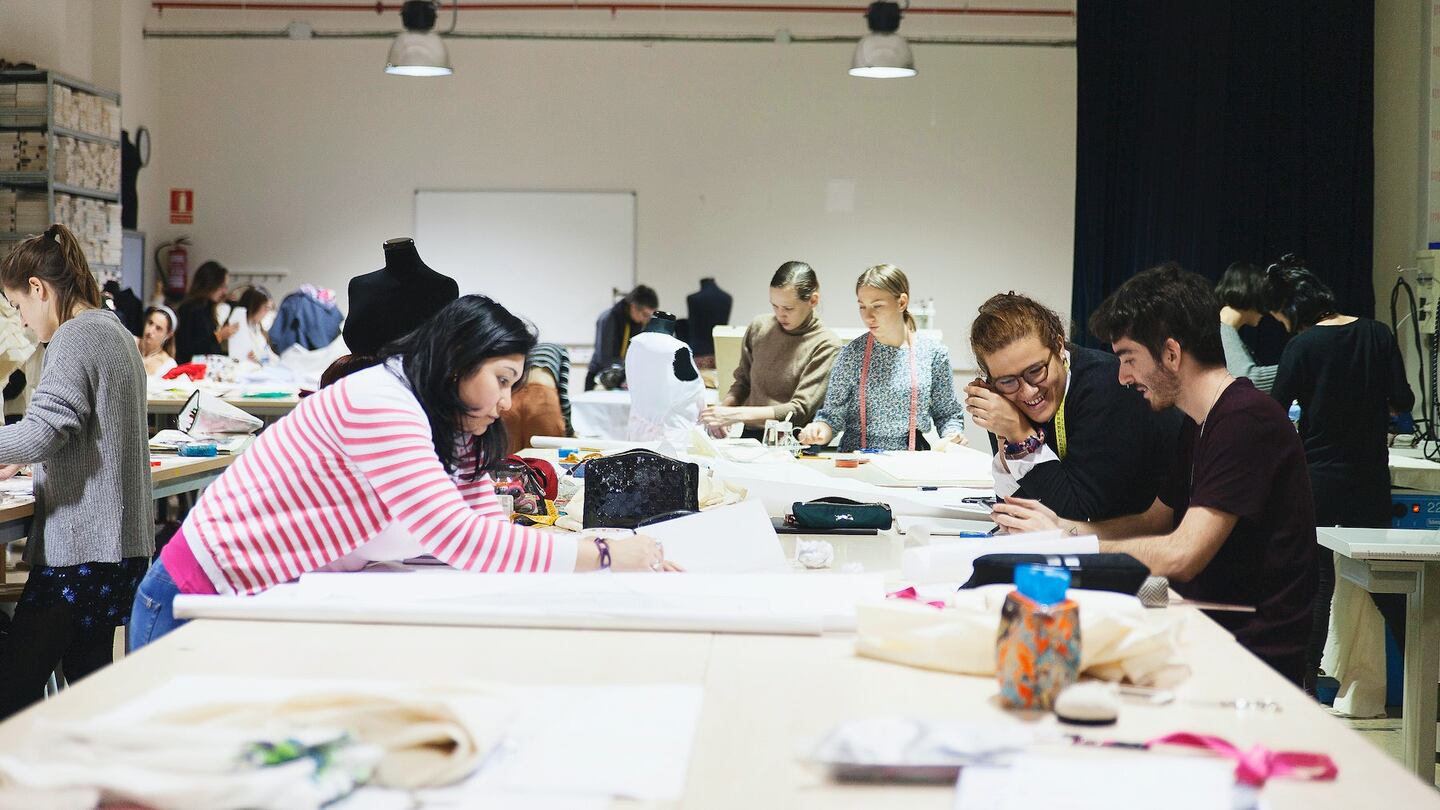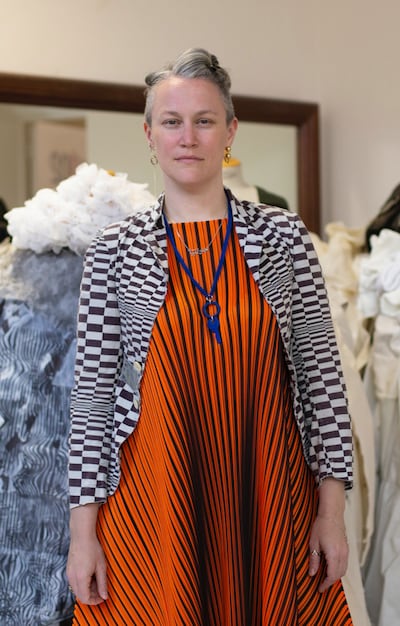
The Business of Fashion
Agenda-setting intelligence, analysis and advice for the global fashion community.

Agenda-setting intelligence, analysis and advice for the global fashion community.

BARCELONA, Spain — Initially founded as a private school in Milan in 1966, today Istituto Europeo di Design operates campuses in 11 cities across Europe and South America. To date, IED has trained students from approximately 100 countries and welcomes around 2,000 students internationally every year.
Following the IED's philosophy to integrate theory with practice, the school maintains industry partnership programmes with more than 200 businesses including LVMH, Kering, Valentino and Swarovski. Through its Special Projects department, students are also given the opportunity to work on real-time commissions from partnering companies.
The school offers BA and MA courses on fashion, textile and accessories design, styling, communication and fashion marketing. Although students are encouraged to utilise local production and operation systems in the varying international locations, the school continues to recognise the importance of the Made in Italy culture of craftsmanship upon which the original Milanese school was founded, grounding its education in these values of combining industry innovation with craft know how.

Julia Weems, director of fashion at IED Barcelona | Source: Courtesy
Now, BoF sits down with Julia Weems, the director of IED Barcelona’s fashion school, to hear about its multicultural ethos, cross-school collaborations and how it empowers its students through nurturing individual talent.
How would you define the DNA of Istituto Europeo di Design?
We're a family and we know that everyone has their own personality. What makes someone stand out is their personal vision, their aesthetic and the experiences that they've had in their life. It's important to help each individual reach their maximum potential.
We work hard here on finding a balance of soft and hard skills. I don't think you can call yourself a higher education institution, or that you're helping a young person prepare for the future, if you're not also helping them understand how to handle stress, how to deal with deadlines, how to be responsible, how to communicate, how to listen, how to analyse and understand what they want in life.
Helping students figure out what they want to do, how to be able to create, to become a productive, proactive, happy individual is our number one goal — and if they become designers in the process, great.
How do you help students develop their individual creativity?
You can't just teach someone how to sew, draw and design; you have to also help them personally figure out who they are and what they want to do — and how to communicate that. That makes them great team members.
Our students work side-by-side with their tutors in labs all day long and have a lot of individual feedback and support. There's plenty of opportunity for passive learning within the working space but having one teacher standing up in a classroom, just explaining what the industry is, is silly.
We maintain small student groups and believe it is essential to offer that kind of education. If you have huge student groups, you can't give everyone the individual attention. All of our students have my contact details, for example. They can reach me when they need to, just like they can our teaching staff. That's something that really defines who we are.
What opportunities do students have to interact with industry?
A lot of our teachers are working professionals, so the information they're transmitting to the students is current to what's happening in the industry. That's something that goes across all of the IEDs. We also bring in designers from different brands to speak to the students, to have them understand what the reality is, what the possibilities are and what could be in the future.
We know that everyone has their own personality. It's important to help each individual reach their maximum potential.
Then, we have the Special Projects Department, which manages extracurricular projects to be taken on by current students looking for extra opportunities or alumni. For example, we recently finished a project with the International Basketball Federation, or FIBA, for basketball uniforms and we annually participate in YoMo Barcelona, the Youth Mobile Festival, where students look at how tech is coming into fashion. The Special Projects Department is definitely a plus for our students because it adds so much to their education and resumés.
Students also have internships, for which they go all over the world. We have great opportunities here [in Barcelona], whether it's with fast-fashion brands or bridal studios for the atelier experience. This past summer, we had a student at The Row in New York and several at brands in the UK, including Alexander McQueen and Vivienne Westwood, but I also have a student going to Korea and another going to the Ukraine this summer.
How has IED adapted its curriculum to reflect the innovations within fashion today?
Our vision of fashion is craft and tech, and to find that fusion is great. You can't have one without the other and we try to give that double vision to the students. For example, our students learn to do hand textile manipulation — embroidery, screen printing, dyeing. Then, they learn the technological things like digital printing and laser cutting, as well as producing a fully professional flat and tech chart.
We also have a Makers Lab here, where we try to push the students to explore further opportunities to mix crafts and tech. Last year, we had a final year student make all of her buttons and trims sustainably. She was upcycling and recycling material waste that she had collected from the pieces of tulle and fabric cuttings on the lab floor. From that, she created a biomaterial. We encourage students to explore these possibilities within their projects.
All of our students also have a fashion management module, in which they do a business plan and take an introduction to marketing to give them a current snapshot of the industry. This helps them understand the language to communicate with industry professionals and to be able to work well with the marketing department in a brand.
What are the shared characteristics of the international IED campuses?
Across our different locations, each campus is comprised of its different departments, intermingled and collaborating, which is characteristic of IED. For example, in Barcelona, we have the fashion school, the management school, the design school, the visual and graphic design school on one site.
We're a multicultural university and we like this clash and mix of cultures and style.
Having this mixture of the different schools allows students to see what their colleagues are doing in the other departments and you end up with cross- departmental networking, which is great for their future. For example, one student opened a concept store in Iceland and she's carrying accessories that are made by another alumni. It’s an international network.
What we're looking for is not to establish an IED style — there are some university courses where you can see their final catwalk and say, "That's this university." We're not looking for that. We're looking for everyone to find themselves. We have students who are more minimalist, we have students who are avant-garde, we have students who are arty and others who are commercial. We like that mix.
What kind of students do you think excel at your school?
We look for students to really take responsibility for their own learning, and the students who open themselves up to that experience — which ultimately empowers them as individuals — are the students that end up excelling. Someone who looks for excuses and does not take responsibility for their work or for the decisions they make in their life is not someone that would excel with us.
We're also a multicultural university, in terms of teaching staff and students, and we like this clash and mix of cultures and style. That's something that really defines us. In Barcelona, for example, about 35 percent of our students have Spanish passports — everyone else is from all over. So, a student who is not looking for a multicultural experience would not do well here. The global aspect of being able to work with students from other cultures and countries brings understanding for the problems and advantages that can come out of that.
This is a sponsored feature paid for by IED as part of a BoF Education partnership. To learn more about IED, please click here.
From analysis of the global fashion and beauty industries to career and personal advice, BoF’s founder and CEO, Imran Amed, will be answering your questions on Sunday, February 18, 2024 during London Fashion Week.
The State of Fashion 2024 breaks down the 10 themes that will define the industry in the year ahead.
Imran Amed reviews the most important fashion stories of the year and shares his predictions on what this means for the industry in 2024.
After three days of inspiring talks, guests closed out BoF’s gathering for big thinkers with a black tie gala followed by an intimate performance from Rita Ora — guest starring Billy Porter.